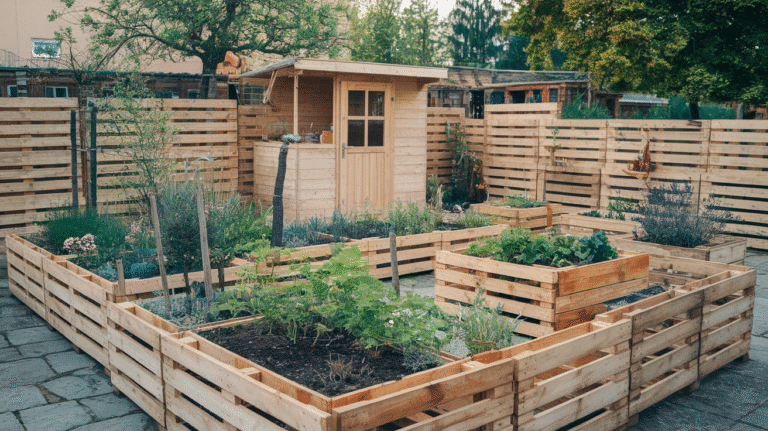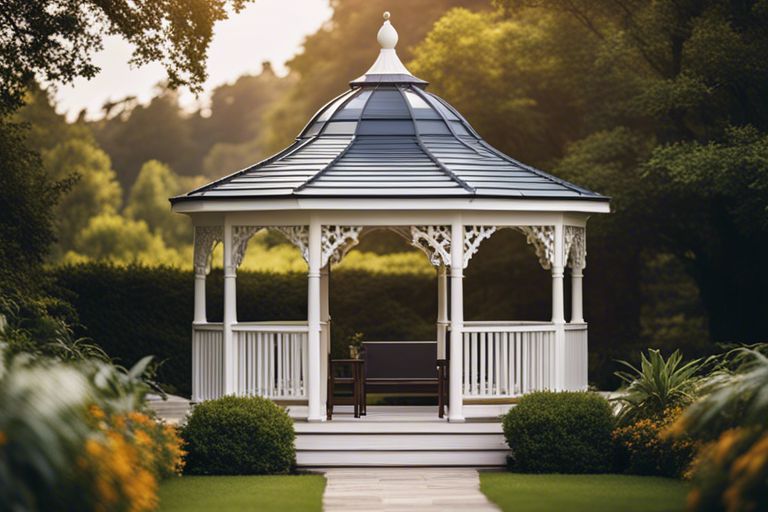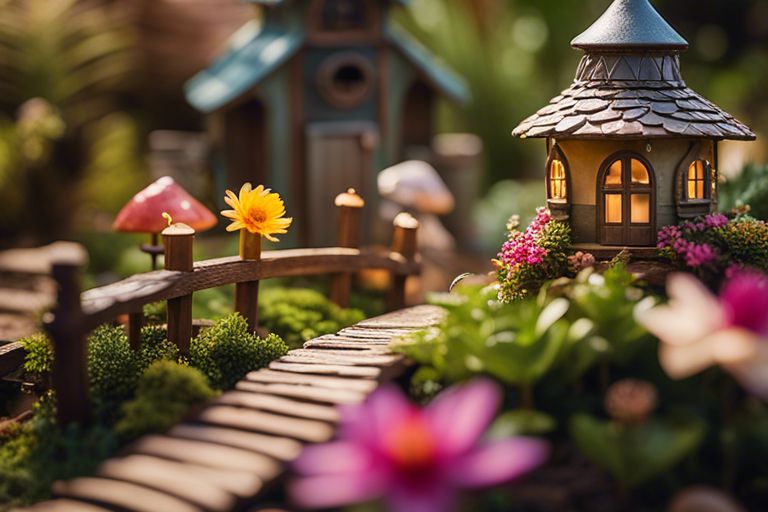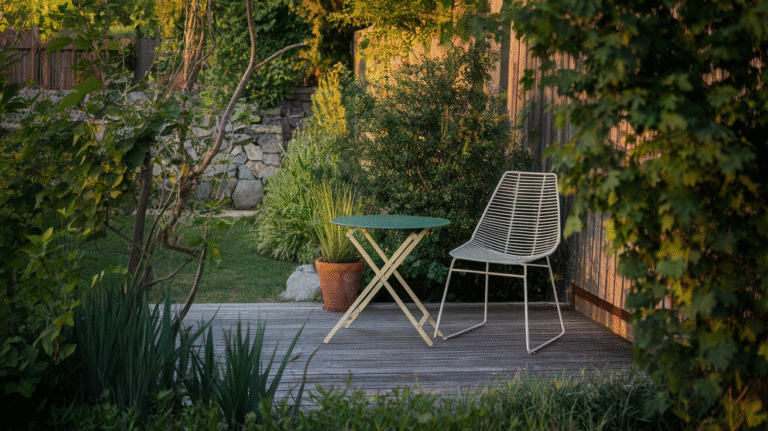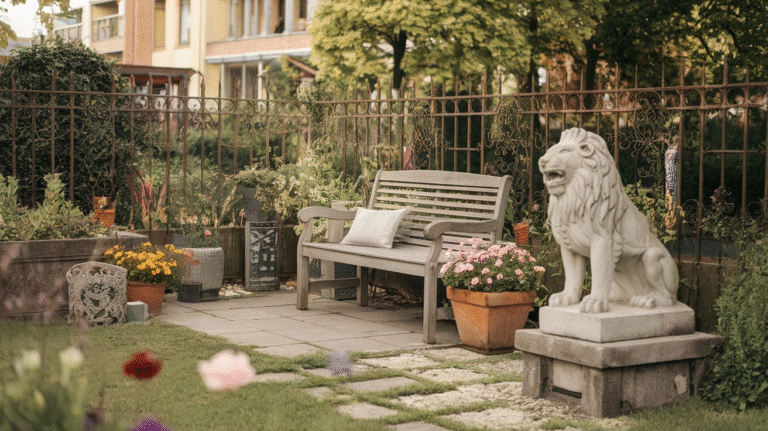24 Garden Path Ideas That Will Completely Transform Your Outdoor Space

A garden path isn’t just a way to get from point A to B—it’s the story your feet read as they wander through your garden.
Whether your outdoor space is a tight city yard or a sprawling country retreat, the right path turns your garden into an immersive experience.
So let’s talk about 24 garden path ideas that don’t just guide your steps—they steal your heart.
1. Gravel Paths with Edging
Gravel paths are like the unsung heroes of garden design: cheap, easy to install, and visually flexible. But raw gravel can look messy.
Add some definition with metal, brick, or timber edging.
I once used steel edging for a narrow gravel path leading to a bench under a tree.
The result? Guests kept asking which designer I hired. Joke was on them—it was a weekend DIY project.
Tip: Use landscape fabric underneath to block weeds and keep the gravel from sinking into the soil.
2. Stepping Stones in Grass
There’s something magical about stepping stones peeking through lawn—as if you’re playing a game of green hopscotch.
It feels informal and organic, perfect for cottage gardens or playful backyards.
Choose large, flat stones and space them naturally based on your walking stride. No one wants to moonwalk through the garden because of awkward spacing.
Stat: Natural stone paths can increase perceived property value by up to 12%, according to landscaping experts.
3. Brick Herringbone Paths
Bricks laid in a herringbone pattern feel timeless.
Think of Victorian garden charm with a structured twist. It’s a pattern that says, “I take my garden seriously, but not too seriously.”
Use reclaimed bricks for a weathered, nostalgic feel. They’ll age better than brand-new ones and are often cheaper.
Pro tip: Lay your bricks on a sand bed over compacted gravel for better drainage.
4. Wooden Boardwalk Style
If your garden tends to get soggy, especially after rain, consider a raised wooden boardwalk path.
It’s ideal for marshy areas or overgrown beds, and it gives your garden that elevated, nature-trail aesthetic.
Use rot-resistant wood like cedar or pressure-treated lumber, and make sure the boards have space between them for water runoff.
5. Flagstone Paths
Flagstones scream elegance. These large, irregular stones create a natural, sturdy path that weaves through beds or lawns.
The trick is to lay them close enough to walk comfortably, but with just enough grass or moss between to keep them from looking overly formal.
Personal story: I once laid flagstones through my herb garden.
In summer, the warmth of the stones releases a faint scent of thyme and oregano. It’s like walking through a Mediterranean dream.
6. Mosaic Pebble Path
Want to add artistry underfoot? A mosaic pebble path is like walking on a storybook illustration. It takes patience and precision, but the payoff is incredible.
Create swirls, spirals, or even floral patterns using pebbles in various colors. Use mortar to fix them in place, and seal for longevity.
Note: This isn’t ideal for large paths unless you enjoy crawling around for days.
7. Bark Chip Paths
Cheap, natural, and soft underfoot—bark chip paths are perfect for woodland gardens or informal veggie beds. They blend beautifully into the landscape.
You’ll need to refresh them every year or two as they break down. But on the upside, they’re biodegradable and enrich the soil.
Budget-friendly tip: Get mulch from your local tree removal service—many offer it free.
8. Concrete Paver Grids
Concrete pavers laid in a grid with grass or moss in between offer a sleek, modern look. It’s like bringing architectural structure into your garden.
This style suits minimalist landscapes, especially when paired with drought-tolerant plants and sculptural features.
Just remember to level the base and keep your lines straight. Nothing screams DIY fail like crooked pavers.
9. Curved Paths Through Tall Grasses
If you want to create mystery, avoid straight lines. A winding path through ornamental grasses makes your garden feel larger and more immersive.
Use fine gravel, flagstone, or even dirt for a natural feel. As the grasses sway, they create a sense of movement and discovery.
Pro tip: Plant taller species like miscanthus or switchgrass along the curve for drama.
10. Japanese-Inspired Zen Path
Think of carefully spaced stepping stones, fine gravel, and clean lines. Japanese paths aren’t about excess—they’re about intention.
Each stone should feel like a choice, not a convenience. Add touches like bamboo fencing or a small water basin nearby to complete the look.
Bonus: These paths encourage slow walking. You don’t rush through a Zen garden—you linger.
11. Cobblestone Pathways
Cobblestones aren’t just for old European towns. They make a textured, durable path that adds rustic charm and lasts decades.
The installation is labor-intensive, but the payoff is worth it. Choose rounded cobbles for a softer look or flatter ones for a smoother walk.
Seal them to protect from frost heave if you live in a colder climate.
12. Recycled Concrete Slab Path (Urbanite Path)
Broke but still want beautiful? Break up old concrete and reuse the pieces like flagstone. It’s called urbanite, and it’s surprisingly chic.
Space the slabs with moss or gravel in between. It’s eco-friendly, cost-effective, and satisfies your inner upcycler.
Stat: Recycling building materials reduces landfill waste and can cut landscaping costs by up to 40%.
13. Mulch Pathways Between Raised Beds
For vegetable gardens, mulch paths between raised beds are practical and comfy. They’re soft, inexpensive, and easy to replenish.
Use cedar mulch for a longer-lasting, pest-resistant option. It smells amazing, too.
Note: If you use straw, be ready for seeds to sprout unless it’s weed-free.
14. Slate Slab Paths
Slate brings a rich, dark elegance to any garden. Slate slabs can be smooth or clefted (with texture) and work beautifully in both modern and rustic settings.
They’re more expensive than gravel or bark, but they last longer and look more refined.
Use them around water features for a dramatic contrast.
15. Glow-in-the-Dark Paths
Yes, you read that right. Some stones and paints absorb sunlight during the day and emit a soft glow at night. It’s not just magical—it’s practical for nighttime walks.
These paths are especially stunning in moon gardens or near patios. Install in a pattern or sprinkle among regular stones.
Fun fact: Glow aggregates can glow for up to 8 hours after sundown.
16. Log Slice Stepping Stones
If you have access to tree trunks, slice them into 2–3-inch thick discs and lay them as a path. It gives a foresty, fairy-tale feel.
Seal them to prevent rot, and lay them on a gravel base for drainage. They’re perfect for woodland or rustic gardens.
Personal tip: Don’t skip sealing or they’ll become spongey, like nature’s version of soggy cereal.
17. Crushed Shell Path
Popular in coastal regions, crushed shell paths have a pearly, beachy vibe. They crunch underfoot and reflect light beautifully.
They work best in dry climates and should be topped up annually. Over time, the shells break down into a fine, compact base.
Warning: Avoid if you’re barefoot-prone. These babies are sharp.
18. Winding Moss Paths
Shaded garden? Turn it into a magical realm with a moss-covered path. It’s soft, serene, and totally otherworldly.
Moss thrives in damp, low-light areas. Lay flagstones or bricks and let moss colonize the gaps—or plant it intentionally.
Low traffic tip: Moss isn’t great for high foot traffic. Use it in peaceful garden nooks.
19. Tile Mosaic Path
Feeling artsy? Break up old tiles and create a vibrant, colorful mosaic path. It’s like Gaudí wandered into your backyard.
You’ll need mortar and patience, but the result is uniquely yours. Use weatherproof tile adhesive and seal after grouting.
It’s a conversation starter that doubles as art.
20. Interlocking Pavers
These come in all shapes and are designed to lock together like puzzle pieces. Interlocking pavers are low maintenance and great for high-traffic areas.
Choose colors that complement your home and surrounding plantings. Add polymeric sand between joints to prevent weeds.
Stat: Interlocking paths can last over 30 years with minimal upkeep.
21. Woven Willow or Bamboo Paths
Lay flat logs or pavers, then edge with woven willow or bamboo fencing. It brings a handcrafted feel and adds definition without being rigid.
These are best in cottage gardens, herb gardens, or spaces where you want organic structure.
Bonus: Bamboo is incredibly sustainable—it grows over 3 feet per day in the right conditions.
22. Terraced Steps on a Slope
If your garden has a hill, make the most of it. Build terraced path steps using stone, timber, or bricks to guide the journey.
Terracing not only prevents erosion but also creates visual interest. You’re not just walking—you’re ascending a narrative.
Tip: Use level platforms at intervals as rest spots or to feature pots.
23. Dry Riverbed Path
Dig a shallow trench and fill it with rounded river stones to mimic a dry stream. It’s both decorative and functional, guiding runoff water and feet alike.
Accent it with grasses or irises to sell the illusion. Add a small wooden bridge for charm.
Note: This path style is excellent in xeriscaped or drought-tolerant gardens.
24. Grass and Stone Checkerboard
Create a checkerboard of concrete or stone squares alternating with turf. It’s modern, playful, and visually stunning.
Perfect for patios or transitional garden zones. Maintain with regular mowing or substitute low-growing groundcover like thyme.
Warning: Avoid in shady, damp spots unless you’re using fake grass—yes, really.
That’s the list, friend. 24 garden path ideas that go beyond the basics—each with its own personality, purpose, and magic. Whether you’re going rustic, modern, whimsical, or classic, there’s a path here to match your garden’s voice.

